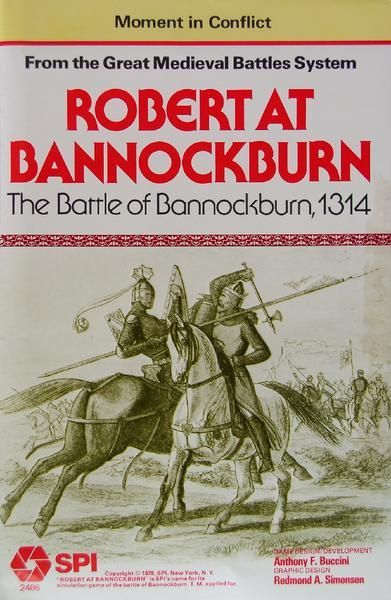Robert at Bannockburn: The Battle of Bannockburn, 1314 (1979) Board Game
Robert at Bannockburn: The Battle of Bannockburn, 1314 is a historical wargame that simulates the famous battle between the Kingdom of Scotland and the Kingdom of England in in 1979. This battle was a significant event in the First War of Scottish Independence and resulted in a decisive Scottish victory led by Robert the Bruce.
Game Components of Robert at Bannockburn: The Battle of Bannockburn, 1314
How To Setup Robert at Bannockburn: The Battle of Bannockburn, 1314
To set up the game, players need to place the counters on the map according to the specific scenario instructions. This involves deploying the English and Scottish forces in their historical starting positions near Stirling Castle. The game includes detailed setup charts and rules to ensure accurate historical deployment.
Gameplay Mechanics and Game Objective
Game Objective
Gameplay Mechanics
Player Experience
Playing **Robert at Bannockburn** offers a deep dive into medieval warfare, particularly the Battle of Bannockburn. The game requires strategic thinking and management of units, morale, and terrain. Players must balance movement, ranged fire, and melee combat to achieve their objectives. The game’s phases are structured to simulate the intense and dynamic nature of the battle.
Pros
Cons
Personal Thoughts on Robert at Bannockburn: The Battle of Bannockburn, 1314
**Robert at Bannockburn** is ideal for fans of historical wargames and those interested in medieval warfare. It offers a challenging and engaging experience, particularly for players who enjoy strategic planning and historical accuracy. However, it may not be the best fit for casual gamers due to its complexity and the time required for each game session. Despite some criticisms on realism, the game remains enjoyable and a great addition to any wargamer’s collection.
We are supported by our audience. When you purchase through links on our site, we may earn an affiliate commission, at no extra cost for you. Learn more.

